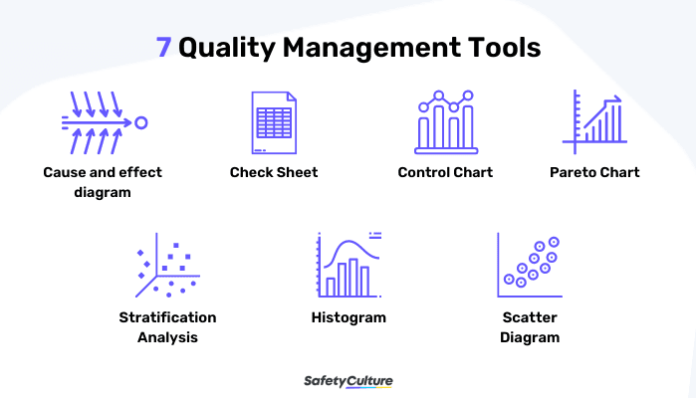Achieving consistent quality is a cornerstone of business success. Whether in manufacturing, service, or software development, maintaining high standards requires more than good intentions—it demands reliable methods. That’s where Quality Control Tools come into play. These tools help organizations detect problems early, correct inefficiencies, and continuously improve their operations.
What Are Quality Control Tools?
Quality Control Tools are practical techniques and visual aids used to monitor, evaluate, and enhance the quality of processes and outputs. They provide structured ways to gather and interpret data, making it easier to identify trends, analyze root causes, and implement improvements effectively.
The Value of Quality Control Tools in Business Operations
Using Quality Control Tools empowers organizations to move from reactive to proactive quality management. By identifying errors at the source, teams can eliminate costly mistakes, reduce waste, and improve customer satisfaction. These tools also help maintain compliance with industry regulations and strengthen internal process control.
The Seven Core Quality Control Tools
These seven widely recognized Quality Control Tools form the foundation of most quality improvement programs across industries:
1. Flowchart
Flowcharts show each step in a process, making it easy to visualize the workflow and pinpoint where breakdowns may be happening.
2. Check Sheet
This tool is used for collecting data in a structured format, typically to record the frequency of specific events or defects.
3. Cause-and-Effect Diagram
Also called the Ishikawa or fishbone diagram, it helps identify and categorize potential causes of a problem to uncover its root source.
4. Histogram
A histogram shows how data is distributed over time, helping teams detect variability and identify patterns affecting quality.
5. Pareto Chart
Based on the 80/20 principle, this chart highlights which issues are most significant, allowing organizations to focus on what matters most.
6. Control Chart
Control charts track process performance over time, signaling when a process is operating within acceptable limits or when intervention is needed.
7. Scatter Diagram
Scatter diagrams display the relationship between two variables, revealing correlations that can explain performance issues or improvements.
Benefits of Applying Quality Control Tools
Implementing these Quality Control Tools results in greater accuracy, better process control, and higher efficiency. They provide a framework for continuous improvement, encourage team collaboration, and drive long-term operational success.
Conclusion
Quality Control Tools are essential for organizations striving to deliver consistent, high-quality results. They turn complex data into actionable insights, enabling better decisions and stronger performance. By integrating these tools into your business practices, you pave the way for reliability, customer satisfaction, and sustainable growth.



